Search result

OnePlus has officially come up with the upcoming smartphone in the budget category. The phone costs less than $500 and called Nord. It won't just another smartphone in the market as it will comprise a range of devices that mark the affordability. The phone is getting released to the UK, European, and Indian markets. The Nord phone is going to be the first phone of a new series line that will make the premium OnePlus experience accessible for more users. The device was initially rumored to be called as OnePlus 8 lite and OnePlus Z, but the company decided to settle for OnePlus Nord.
The company is focusing on ‘never-settle' spirit and creating some of the best product lines for its consumers, but it is also about challenging ourselves and going beyond our comfort zone, said OnePlus founder and CEO Pete Lau. He further added, "We are immensely proud of our flagship products and will continue to create more tech-leading flagships for our users. Now we are excited to share the OnePlus experience with even more users around the world through this new product line. OnePlus also confirmed, via its Instagram channel, that 100 units of its new smartphone will be available to order at 9 am BST (4 am EDT, 1 am PDT) on July 1.
OnePlus launched its affordable handset back in 2015 and since then it hasn't introduced any budget-friendly phone. So, far there isn't much information on the device. A few leaks are about its camera and processing chips. According to the rumors, the OnePlus Nord is designed to feature a dual-facing camera system that includes a 32MP lens for the primary camera and an 8MP depth-sensor camera lens in a punch-hole cutout in the corner of the display. The other leaks suggest a device with a Qualcomm Snapdragon 765G chipset, 6GB of Ram, and a 6.65-inch display screen with three cameras at the rear side. A limited batch of 100 pre-orders are set to open on July 1, so we should have a better idea of the final price by then.

The less-than-30,000 category just a lot more exciting this year, as we have seen two big names Realme and OnePlus released their budget-friendly phones. The Realme X3 series which includes the Realme X3 and Realme x3 superzoom offers some really good specifications including a telephoto camera for the price. OnePlus recently released its much-hyped Nored smartphone, making it the second affordable mobile from the company. Vivo also went ahead and launched V19, which also good a good rating from the users. These phones make some really good list of the phones that are under Rs. 30,000. But what if you have to choose just one. Don't worry. We are here to help you to make the decision and purchase the best phone for your hard-earned money.
The OnePlus Nord is a new phone from OnePlus and the good news is that it falls into the budget category while providing some of the best specs around. It manages to deliver a similar Android experience as the OnePlus 8, which is a pricier smartphone. OnePlus has kept all the major specs such as the AMOLED display, warp charge, fast charging, and a massive battery power to back up the phone all day long. The OnePlus uses a glass cover on the back and it's more like plastic.
The phone features Qualcomm Snapdragon 765G which does support 5G, that is cool. Overall it is hard to find any flaw in terms of performance. You can play video games or watch videos without getting it too hot or lagging performance. It uses four rear cameras with two front cameras. The primary camera is 48MP and uses the same sensor as the flagship OnePlus 8, complete with optical optimization to eliminate blur and unwanted noise. It can sharpen things in tricky shooting scenarios, like harsh sunlight. The front camera can record in 4K at 60fps.

Xiaomi has taken the lead in the budget category smartphone once again by introducing the entry-level phones Redmi 9A and Redmi 9C in Malaysia with a starting price of less than $100(RM 360). Both phones feature a large-sized display screen, reasonably big batteries, and up to three rear cameras. The phones are equipped with an IPS LCD panel of 6.53-inch. The dot-drop notch display produces an HD+ resolution of 720 x 1600 pixels and a 20:9 aspect ratio. Both devices come with large 5,000mAh batteries. These devices have 2 GB of LPPDR4x RAM and 32 GB of eMMC 5.1 internal storage.
For additional storage, these devices come with a microSD card slot. The Android operating system along with MIUI 11 comes preloaded on the Redmi 9A and Redmi 9C smartphones. The Redmi 9A is powered with the powerful Helio G25 octa-core processor that works at 2GHz whereas the Redmi 9C has Helio G35 octa-core SoC that ticks at 2.3GHz. Both smartphones house a 5-MP camera for selfie and front videos.
The Redmi 9A has a single rear camera of 13-MP whereas the Redmi 9C has a triple-camera system module that includes a 13-Mp primary camera lens, a 5-MP ultra-wide lens, and a 2MP depth sensor with LED flashlight. The 9C features a rear-mounted fingerprint sensor for security but the Redmi 9A doesn't have this security feature. The Redmi 9A and 9C come with other common features like dual SIM slot, 4G VoLTE, Wi-Fi 802.11 b/g/n, Bluetooth 5.0, GPS, USB-C, IR blaster and 3.5mm audio jack.
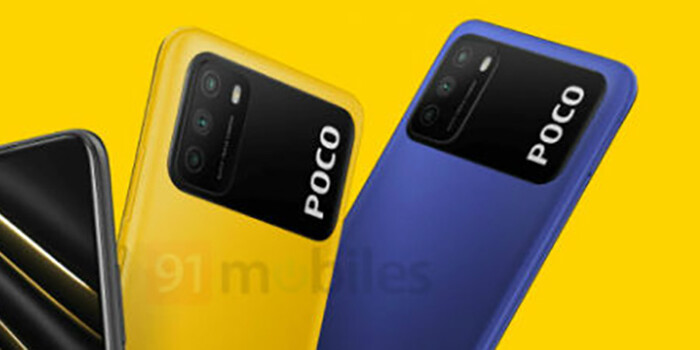
POCO has been focusing on one smartphone for nearly two years, but now the company has tried to add multiple smartphones to its existing and new series in 2020. They have introduced a new smartphone - called POCO M3, which is a direct successor of the relatively recent smartphone POCO M2. Usually, the successor phones take a similar design but the company has completely redesigned the new phone on the rear side and put a new chipset from Snapdragon instead of choosing a chip from MediaTek.
The most obvious change in the M3 is the rear design. The brand completely redesigned the back design, making it more of today's design and youth-centric. The design looks expensive as compared to the price tag which is really a refreshing option among its cheaper-looking rivals. The camera is placed in a rectangular shape housing on the top left corner like many other budget series mobile phones, however, the camera unit is placed inside a larger, all-black housing with a big POCO logo on the right side in the vertical fashion. The phone features a large 6.53-inch IPS LCD waterdrop/ dot-drop display as its predecessor with FHD+ resolution and has a gorilla glass protective cover to save the phone in case of accidental fall. The phone also comes certified with TUV Rheinland's low blue light certification.
The POCO M3 comes with a large 6,000mAh battery inside that should keep you going for more than a day. This is a significant upgrade from the 5,000mAh battery found on the POCO M2. And what's surprising is that both phones have the same weight despite of the battery difference. The phone still supports only 18W charging, so it should take even longer to fully charge this battery.
The previous model had a quad-camera system with the ultra-wide-angle sensor which the company decided to skip this time, leaving you with a triple camera setup instead of a quad-camera setup found on its predecessor. But to compensate for the loss of an important camera sensor, M3 has come with a larger 48MP f/1.79 as a primary camera sensor. There are two other camera sensors, a 2MP macro camera sensor, and a 2Mp depth sensor. On the front side, you get an 8MP f/2.0 selfie shooter. The phone is running MIU12 for Poco, which is based on Android 10. The phone is available with 4GB RAM and 64GB and 128GB internal storage for $129 and $149 respectively.
 |
 |
|
this article is not available |
||
 |
 |

Amazon's latest sale brought a few new exciting discount rates for the smartphones. The Samsung Galaxy S10 is available just for $600. However, the best deal is not by Samsung or Apple. The credit goes to Nokia 7.1. It was retailing for $349, and now in the sale, the phone is available only for just $249 after a full $100 off. Since last year, the mid-range smartphones are getting better. Back in November when Nokia 7.1 was released, it stood out as something special. This remains true to this day.
At $250, no phone even come close to it. The Nokia 7.1 has the glass back and metal frame which is only found in flagship smartphones that costs hundreds of dollars more. The design looks amazing. Along with the design, It has 19:9 aspect ratio with a compact screen to body ratio of 80%. Nokia 7.1 took time to work on display. It has LCD panel with a resolution of 2220 x 1080. Nokia 7.1 can play HDR10 videos and games. It has USB-C port for charging, the 3.5mm headphone jack. There is also NFC chip that allows you to execute the contactless Google Pay.
The Nokya 7.1 is powered by the latest Android 9 Pie out of the post. You get the One UI experience with no clutter and guaranteed software & patches updates. At this price, Google Pixel 3a was competing Nokia but after the $100, Nokia 7.1 took a huge leap. It has premium design, the display looks great, and the software is updated. It has 12 MP camera lens at the rear side with another 5MP camera lens for creating the stunning pictures. For selfie it uses an 8MP camera at the front with 84 degree FOV so you can take wide-angle pictures and everyone gets fit in the picture. It uses the HDR, dual sight, and pro camera modes to create unparalleled images.
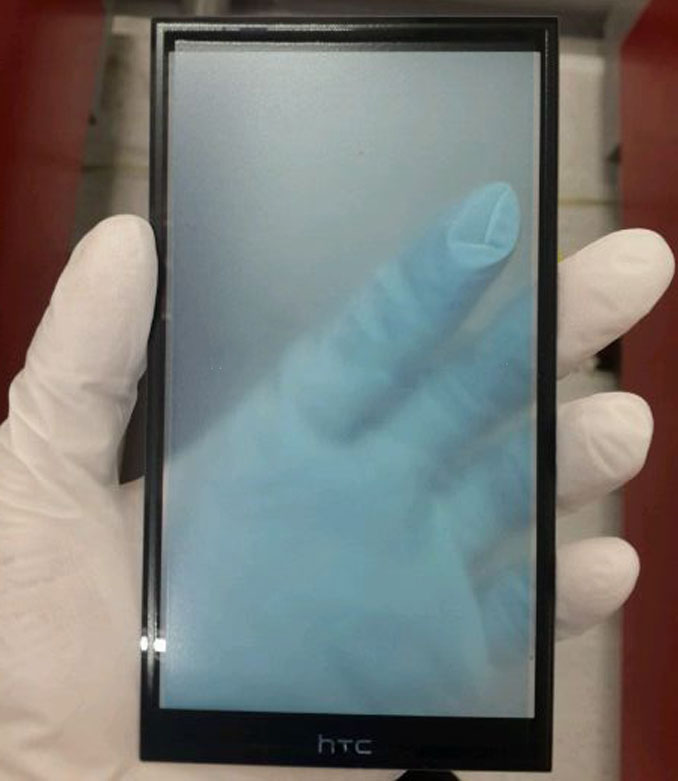
Claimed front panel of the supposed HTC One M9 has popped up, and if this leak holds water, it means that the upcoming flagship from HTC will have a pretty good screen-to-phone-size ratio.
Of course, here we have to tack on the BoomSound stereo speakers top and bottom, but legend has it HTC is working on slimming those down even further, so we might end up with both a compact and elegant handset for the screen size.
.jpg)
Interestingly, the source claims that this is a 5.2" panel, as per the original rumor, instead of the 5.5" diagonal we've been hearing lately, but their musings are backed only by a comparative picture where the One M9 display is put next to the 5-incher of the One M8, so nothing is set in stone just yet.
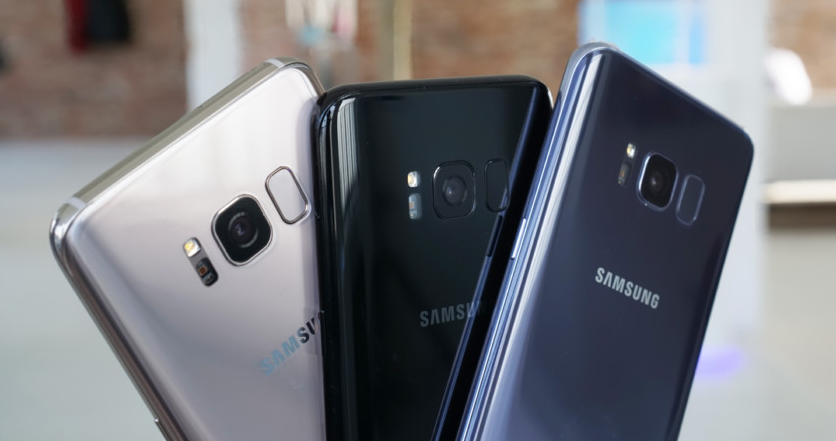
Yes you read that right and no this isn't one of those eye-catching clickbait titles either. You can actually buy a Galaxy S8 in its home nation for a price lower than $180 ($177)/200,000 Won, but it wouldn't be "legal" as per Samsung's stipulations.
Reports have confirmed that certain online and offline retailers are providing their customers with subsidies worth a minimum of 600,000 Korean Won or $530 roughly! This effectively cuts down the S8's marked price of 935,000 Won ($825 roughly) to a selling price of 335,000 Won or about $295. Mind you, that's the "least" amount of subsidy on offer here. Legally, the retailer cannot sell the phone below 753,000 won or about $665.
If you are wondering why the retailers would do that, it is supposedly a ploy to keep their customers according to the reports. If you are wondering how they would make a profit out of virtually giving away such expensive smartphones, we have no clue either! Whatever the reasons are, I bet you are feeling pretty jealous right now.
Saikat Kar (tech-enthusiast)
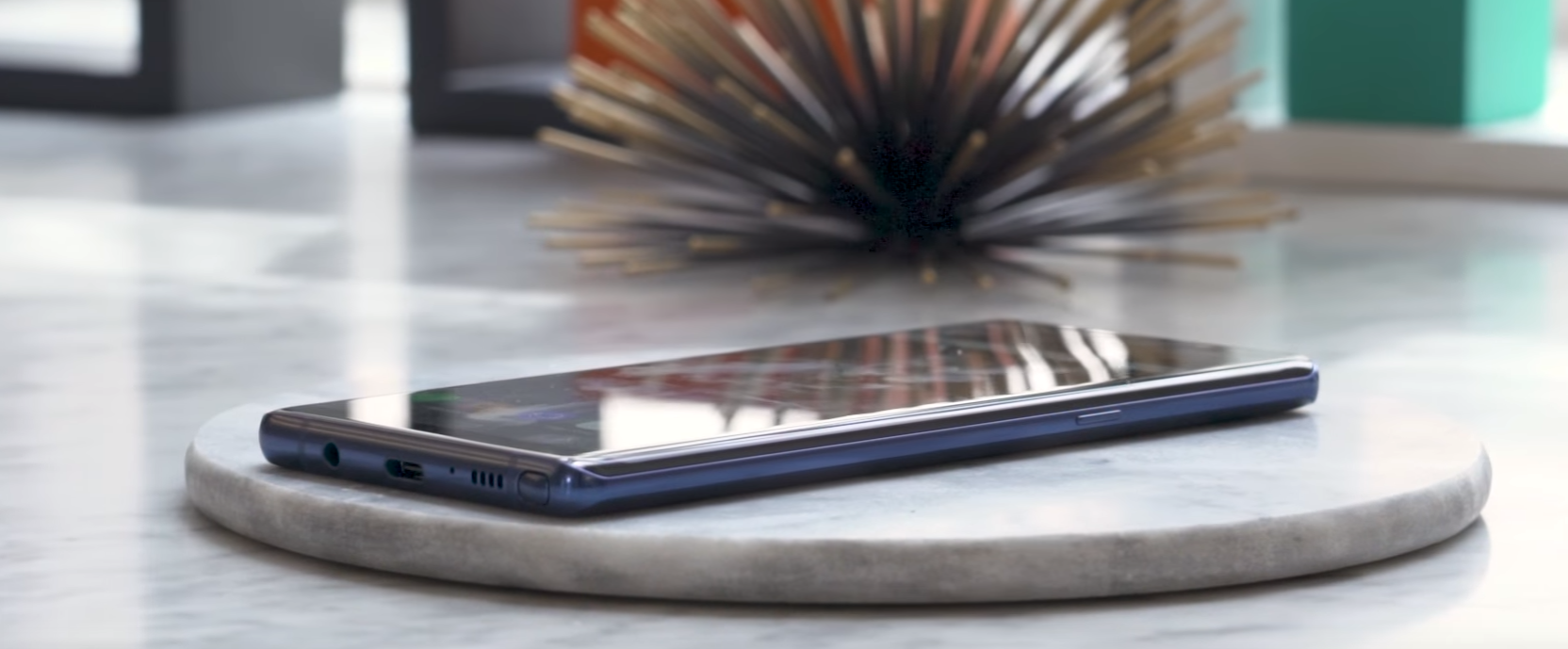
Although the Galaxy Note 8 was launched with 6GB of RAM on Wednesday, rumor has it that Samsung is planning to release a cheaper version of its latest flagship smartphone with 4GB of RAM. Everything else should be exactly the same though and that brings us to the question, would you mind less RAM if you could save up on some money for that?
As of now, the rumor suggests that the phone is only being developed for China, but it could be making an appearance in other Asian countries as well. The Note 8 with 4GB of RAM came into limelight after it was seen passing through the TENAA. As per the report, this one will be cheaper at 5,664 Yuan/$850, whereas the regular Note 8 with 6GB of RAM should be priced at around 6,288 Yuan or $943. We are not sure if this cheaper version will hit any other countries outside Asia though.
Saikat Kar (tech-enthusiast)
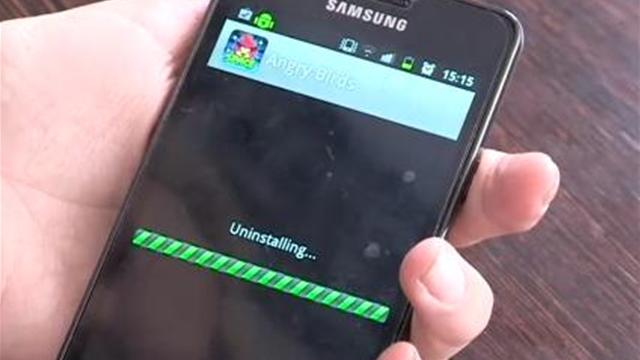
According to a report by Appsflyer, Android users are much more likely to uninstall applications from their smartphones than iOS users. To be more precise, Android users are about twice as likely to uninstall an app from their phone, as compared to an Apple iPhone user. The conclusion was drawn by the analysts after going through data based on 500 apps and about 20 million devices. The comparatively short-lived interest in multiple apps, as exhibited by the Android populace could be a result of any one or multiple of the following reasons.
Android users outnumber iPhone users quite significantly, and unless the data was collected by keeping that fact in mind, the sheer numerical superiority can definitely contribute to such an overwhelming difference in behaviour between the two groups.
The Play Store now officially has more apps than the App Store, but when it comes to quality, the App Store is still leading. The Play Store has a lot of buggy and broken apps on it, which might be the reason why Android users uninstall a lot of the apps just shortly after downloading and using it.
Finally, it could be the absolute low-end, outdated garbage which some of the sellers (including Samsung) still sells to their customer base in developing nations like India, Pakistan, etc. Some of these horrible outdated phones even have internal storage capacities as low as 4GB (Useable memory being anything in between 1.2GB to 2.2GB at most). Add to this the fact that these devices also sport ancient hardware that can't even start the modern games properly and you have an instant answer for a lot of those quick uninstalls.
Saikat Kar (tech-enthusiast)
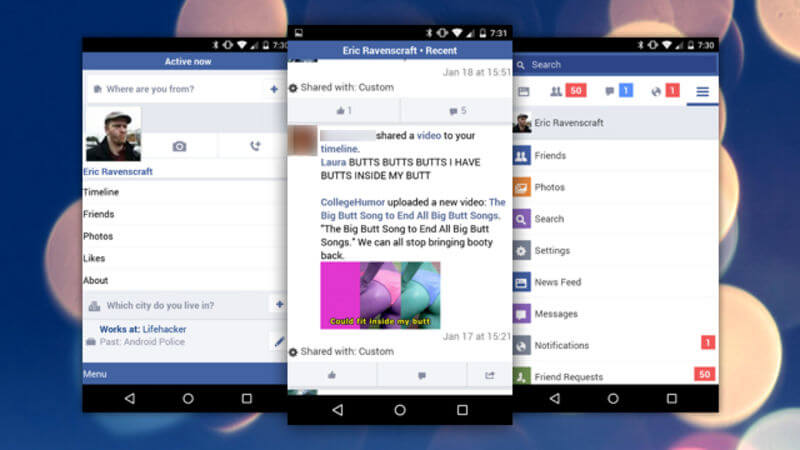
Facebook has just officially published "Facebook Lite" v1.0.0.0 App on the Google Play store. The main reason for this App is to make a lite, fast Facebook App for Low-end Android smartphones, as the current Facebook App is very large in size and performs slow on low-spec devices with less Ram and CPU power and uses less data and works in all network conditions

Facebook Lite is relatively tiny for an app from a major social network, weighing in at only a quarter of a megabyte a crucial stat if you live in a place that can only get 2G data access. There's a good reason for that, too: it looks like Facebook Lite isn't much more than a WebView wrapper for the mobile site, plus native Android notifications.

That might indeed be very useful for someone who just wants to check in on Facebook without loading up the admittedly heavy Chrome app, but for most current users it won't add any real functionality. Facebook Lite does include a few extra bells and whistles that aren't available on the web, like the ability to peek into your phone's contacts to see if there's anyone you've ever spoken to that isn't your Facebook friend yet.
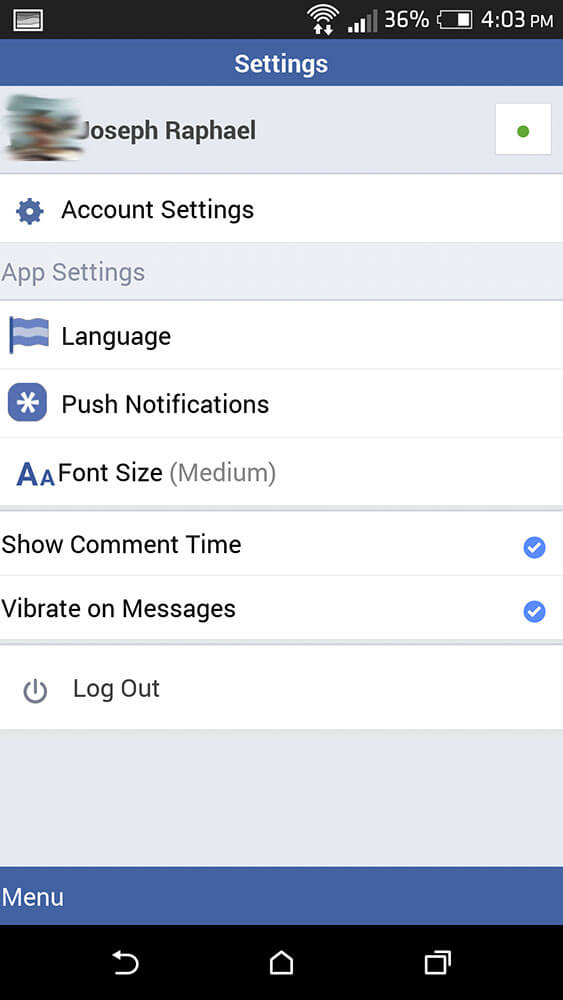
Facebook Lite main features:
- Fast to install, the app is less than 1 MB
- Quick to load
- Efficient with data
- Designed for 2G networks and areas with limited network connectivity
![]()
Facebook Lite 1.0.0.0 [APK Download]

If you are not a big fan of wireless charging, an IP water resistance, the fastest Qualcomm processors, and optical zooms, Oppo has a smartphone with some other premium features only at $499 for you. It has announced its news newest addition ‘the Reno Z' which offers luxury for less. The new device elevates photography and entertainment capabilities, more than any other device at this price range. Oppo Z has a 48MP rear camera with a 6.4-inch AMOLED screen. It has the ultra night mode 2.0 for night photography, and VOOC 3.0 to dramatically increase the speed of charging. For selfie camera it has 32MP ultra-high definition camera lens. With a larger aperture, the Reno Z takes professional quality portrait photos effortlessly.
Reno Z is packed with 128GB ROM and 8GB RAM, the Reno Z will allow you to stream, play video games, download, and chat. The device is powered by 4035mAh battery, which makes it to charge faster and the battery stays for a longer period of time. The device uses Dolby Atmos to deliver premier sound quality. The Reno Z's stereo speakers use the phone's receiver as a secondary speaker to achieve a full stereo effect. The phone has the latest generation of ColorOS - an OS based on Andriod 9 with swipe-up generation and smart assistant.
The Reno Z has an impressive 92 per cent screen-to-body ratio. The camera is concealed within the 3D Corning® Gorilla® Glass 5 surface. According to Tran, "Making premium accessible is, and always will be a priority at OPPO. The Reno Z does just that, taking a number of impressive features from across the Reno Series and making them accessible to Aussies, no matter their budget." The Reno Z runs a Media Tek processor. It will available in two colors: Aurora Purple and Jet Black.

OPPO just recently released the K7 5G smartphone officially in China. It is the next model of OPPO K5 that was launched last year with the Snapdragon 730G processing chip. The successor model comes with 5G connectivity support and is available only for 1,999 Yuan, which is approximately $286. The OPPO K7 5G comes with some premium-like features such as fast charging support, a quad-camera system, and a 32-megapixel selfie camera sensor. The phone measures 160.3 x 74.3 x 7.96mm and it weighs 180 grams. It comes with a 6.5-inch AMOLED display screen Full HD+ resolution of 1080 x 2400 pixels. It is equipped with an in-display fingerprint sensor to prevent any unauthorized access to the phone.
The OPPO K7 5G is another pone that is powered with the Snapdragon 765G processor. The device is coupled with high-speed UFS 2.1 internal storage and LPDDR4x RAM. You can expand the memory further via an external microSD card. The device has a 4,025mAh battery to keep it alive all day long. The phone has a quad-camera system on the rear side with a 48-megapixel as a primary camera, a super-wide camera of 8-megapixel, a 2-megapixel macro camera, and a depth camera of 2-megapixel.
The phone runs on the latest stable version of Android 10 OS with colors 7 user interface on the top. The available connectivity features are dual SIM slot, Wi-Fi 802.11ac, Bluetooth 5.0, GPS, NFC, USB-C, and 3.5-mm audio jack. The phone will be available in the market in China on Aug 11. The device comes with 8GB RAM with 128GB and 256GB internal storage options. The phone is available in color options such as sea night, mystery black, flowing cloud, flow flame, and gradient yellow.

The Snapdragon 815 is coming this year, We have heard a lot of things about hot Snapdragon 810 chipset and its alleged overheating issues. We still don't know the whole outcome of the story as there are almost no real tests that show if the Snapdragon 810 processor really suffers from overheating.

However, there are several reports, especially the recent HTC One M9 overheating issues, that showed high operating temperatures. The issues seems to be fixed with the upcoming Snapdragon 815, which runs at 100.4 degrees (38° C), compared to the 107.6 (42° C) degrees by the Snapdragon 801, 111.2 (44° C) degrees by the Snapdragon 810. Since there isno real test of the Snapdragon 810, and the Snapdragon 815 is still far away from production.
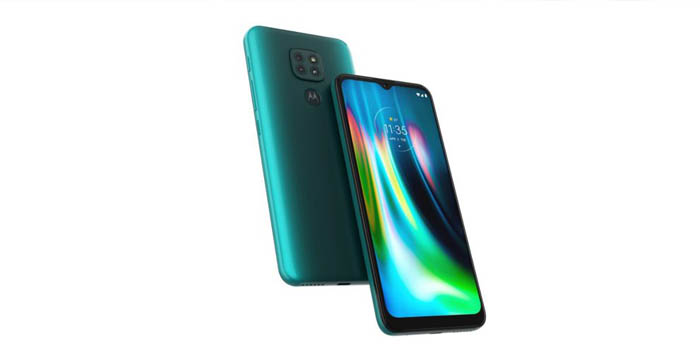
The Moto G9 by Motorola has launched in India officially with the affordable smartphone likely to reach other countries in the near future. Thanks to competition in the mobile industry, we are not short of budget-friendly smartphones but the Moto G9 is yet another addition to the list that includes less than $200 price tag. Moto G9 is the direct descent of the Moto G8 that was launched earlier this year, with the price you might expect from the series. The phone doesn't claim to be heavy-duty and has some modest features.
The Moto G9 comes with a large 6.5-inch HD+ LCD screen with 1600 x 720 resolution and a 20:9 aspect ratio. Inside the Moto G9 comes with Qualcomm Snapdragon 662 chipset, 4GB of RAM, and 64GB of internal storage. The phone comes with an expandable storage option via a microSD card. The phone features a massive 5,000mAh battery that also supports fast charging. With the USB-C fast charger that comes along with the device, you can charge up to 20W charge speed. The device has a notable fingerprint scanner on the rear side, support NFC that is needed for mobile payments, and a water repellent coating. This isn't the same as an IP certification by a stretch but it can save your phone from a few splashes here and there.
The phone comes with three cameras at the back including a 48-megapixel primary camera, a 2-megapixel depth sensor, and a 2-megapixel macro sensor. At the front, the phone features a dewdrop notch that is capable of taking 8-megapixel shots. The Moto G9 is set to go on sale in India starting from August 31, 2020. The phone will be available for around Rs. 11,499 or around $155. It will be available in two colors - sapphire blue and forest green. Given the date, we can expect the phone to be available in other global markets over the coming weeks.
© 2023 YouMobile Inc. All rights reserved





